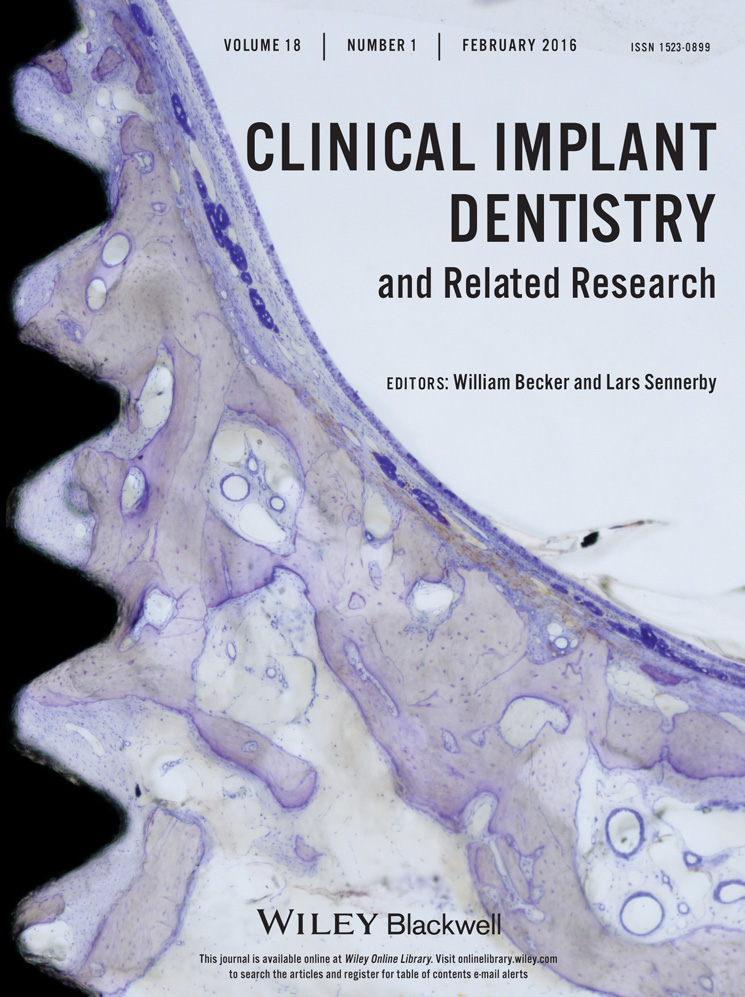Vertical Bone Augmentation with an Autogenous Block or Particles in Combination with Guided Bone Regeneration: A Clinical and Histological Preliminary Study in Humans
Abstract
Background
Vertical ridge augmentation with the use of solid bone blocks or particulate bone autograft, exposed or covered by a nonresorbable expanded polytetrafluoroethylene (ePTFE) membrane, are well known in the literature and have been shown to be effective in treating bone atrophy.
Purpose
The aim of our study was to assess the two techniques in respect to biological properties of transplanted bone in graft revascularization and bone remodeling in conjunction with dental implants.
Materials and Methods
Ten patients were treated within the study, with a total of 12 sites with posterior mandibular edentulous ridges with insufficient bone to allow implant placement. Bone regeneration was performed using autogenous intraoral block graft or autogenous particulate graft with an ePTFE barrier membrane. At 6–10 months, reentry surgery was performed; bone biopsies, including microscrews, were harvested; and implants were placed.
Results
Eleven sites out of 12 healed uneventfully. A mean height gain of 5.03 mm was achieved. Mean bone-to-implant contact and bone fill were assessed by means of histomorphometric analysis. The block specimens revealed a bone-to-implant contact of 42.34%, and the particulate grafts had a bone-to-implant contact of 26.62% (p < .012). Bone fill values reported were 68.32% and 48.28% (p < .019) for block specimens versus particulate grafts.
Conclusions
The results clearly showed that both techniques were clinically successful for subsequent implant placement and prosthetic rehabilitation. The histological outcomes, including revascularization and bone remodeling, of the two techniques differed significantly. The block grafts outperformed the particulate grafts in terms of bone-to-implant contact and bone fill values; however, the morbidity associated with the donor site of the block must be considered.




